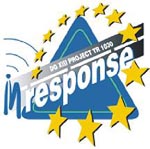Customer: EU, DG XIII TR 1030 ATT
Duration: January 1996 – March 1999
Fast and reliable motorway incident detection and response are the instrumental in reducing traffic delay and increasing safety. Innovative sensing technologies, such as those to be used in IN-RESPONSE are based on machine vision, CCTV, Automatic Vehicles Identification-electronics tags (AVI), Weighing in Motion (WIM), radar detectors, weather data and wide-area detection, could help determine additional incident features that are critical for proper reaction to incident emergencies.
The new information can be used by authorities to respond more efficiently and provide faster service, e.g. to medical emergencies. To address the user needs, IN-RESPONSE will develop and validate integrated incident detection and response strategies that are based on innovative sensing to enhance integrated incident management so that total efficiency of incident detection and response across rapidly changing traffic characteristics is improved.
Major project applications are: (a) Incident detection, using conventional (loops) and innovative sensing technologies,
(b) Incident verification and assessment based on multimedia communication,
(c ) Decision support to operators and other primary users in incident management, and
(d) Allocation / dispatch of emergency response resources, and communication with health care/emergency/centers. These applications will help users automate procedures related to incident management operation by reducing total response time.
Major advantages of the proposed application over traditional approaches are: (I) Integration of incident detection, response and remedy operations, (ii) Integration of incident response and medical emergency response operations, and (iii) Alternative technologies / algorithms for incident detection, including advanced image processing. The application sites will be Oslo (Norway), Valencia (Spain), Utrecht-Eurodelta (The Netherlands), Thessaloniki (Greece), Munich (Germany), Paris (France).
Role of TREDIT:
– Project management
– Implementation of innovative sensing technologies
– Collection and analysis of user activities and requirements
– Standardisation
– Inter-project liaison
– Quality assurance and control

